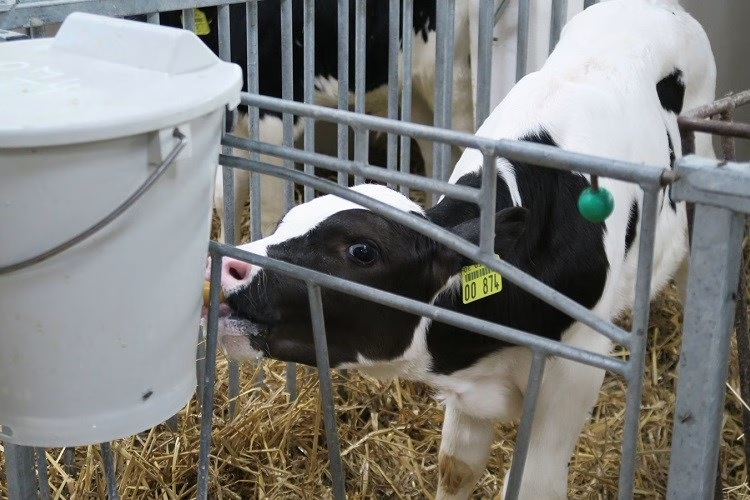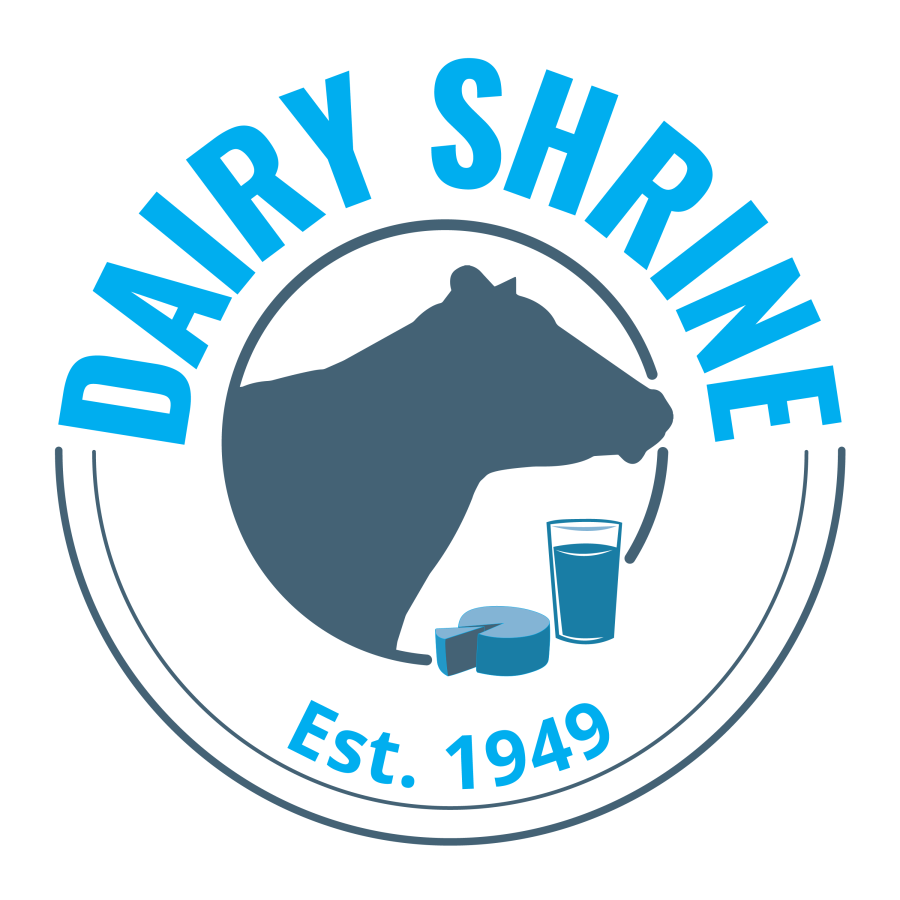Simplify your dairy farm data analysis and turn insights into action. Discover how to make data-driven decisions effortlessly. Are you ready to maximize your farm’s potential?
Summary:
The dairy farming industry has significantly increased data generation through smart devices and sensors, providing valuable insights into milk production, cow health, feed efficiency, and environmental variables. Data-driven decisions are crucial for maintaining a competitive business, leading to higher sustainability, better animal welfare, cost reductions, and increased output. However, challenges such as data overrun, technical knowledge gaps, and complexity of data sources persist. Integrating data through farm management software and empowering farmers with training can transform raw data into actionable insights. Moreover, emerging technologies like artificial intelligence, machine learning, and blockchain promise to revolutionize dairy farm data analysis, enhancing productivity, reducing illnesses, and optimizing machinery maintenance.
Key Takeaways:
- Embrace technology: Utilize advanced sensors and smart devices to gather and monitor comprehensive data on milk production, cow health, and activity.
- Centralize data collection: Implement integrated systems that streamline data aggregation from multiple sources, facilitating cohesive analysis.
- Invest in analytics tools: Leverage specialized software designed for the dairy industry, providing real-time insights and predictive analytics.
- Prioritize training and education: Equip your team with the necessary skills to interpret data effectively and make data-driven decisions confidently.
- Transform data into action: Use analytics to identify trends and areas for improvement, translating insights into strategic actions for farm management.
- Stay ahead of technological advancements: Keep abreast of evolving technologies that can revolutionize data analysis and enhance farm efficiency.

Data: The Lifeblood of Modern Dairy Farming
Empowerment through Data: The Lifeblood of Modern Dairy Farming Maintaining a competitive and practical business in contemporary dairy farming depends on data-driven judgments. You are using data results in higher sustainability, better animal welfare, significant cost reductions, and increased output. This empowerment through data allows you to take control of your farm’s future.
Greater productivity is one significant advantage of data-driven decision-making. Data from milking times and cow activity sensors may help to identify the ideal milking schedule. For example, Wisconsin dairy farmer James maintained high production levels by using intuition and statistics to solve health problems in his herd.
Still, another significant benefit is better animal welfare. Health monitoring devices detect cow activity patterns and warn early for health problems. Timely actions made possible by this help lower illness incidence and enhance cattle welfare. James’s experience emphasizes the need to act based on data insights.
Furthermore, cost reductions are tightly linked to data-driven solutions. Reducing waste and adjusting feeding plans help to save feed costs. Machinery predictive maintenance increases equipment lifetime and helps avoid expensive failures, providing a sense of financial security and stability.
Moreover, increased sustainability depends heavily on data. Like water and energy, resource use should be observed in sustainable methods. Data directs soil management choices and crop rotations, guaranteeing the land’s health and output. This commitment to sustainability is something to be proud of.
To sum up, dairy farming needs a data-driven attitude. Real-world cases like James’s farm demonstrate how data transforms instinct-driven hunches into valuable insights that propel improved results across production, animal care, cost-efficiencies, and sustainability. By embracing analytics and technology, you can thrive in a data-centric environment.
Overcoming Data Analysis Challenges in Dairy Farming
Analyzing the abundance of data on contemporary dairy farms presents significant difficulties, even if it is a topic of great importance. Data overrun is one main challenge. Many sensors monitor variables like milk output, cow activity, and feed intake, therefore overloading farmers, increasing their cognitive burden, and possibly causing decision paralysis.
The lack of technical knowledge among many farmers adds even more difficulty. Although the agriculture industry uses cutting-edge technology, many members must learn to analyze complicated data sets properly. This disparity affects operational efficiency and impedes clear, actionable findings.
Different data sources complicate data analysis even further. Modern farms run large data-generating equipment separately, without a central system. This fragmentation hides important insights within particular data silos, therefore making it difficult to get a clear view of farm performance.
Combining several data kinds—sensors for handwritten notes—adds complexity. Variations in data forms, collecting frequency, and accuracy level complicate the process and require advanced data management systems for dependability and consistency. Farmers spend too much time matching these sources, which causes irritation and reduces their capacity for necessary agricultural tasks.
These difficulties ultimately cause great annoyance and time constraints. Dealing with data analysis within a busy schedule might seem impossible and take focus away from regular operations. This emphasizes the requirement of readily available integrated data analytics tools to simplify the process and support more innovative, data-driven decision-making.
Streamlining Data Collection for Actionable Insights
If you want your agricultural data to become valuable insights, simplify your data collection. Farm management software integrates data from many sensors and provides a holistic perspective of your farm. Data collection automation helps liberate time for strategic choices and lowers hand-made mistakes.
Dependable sensors and automatic data entry systems are also essential. With little human involvement, high-quality sensors can continuously, precisely track milk output, cow behavior, and health in real-time. Excellent and consistent data collection helps your insights be more dependable and practical.
Transforming Dairy Farming with Data Analytics Tools
Data analytics technologies’ combined use has transformed dairy farming’s decision-making process. Among other sites, Agrivi, FarmLogs, and DairyComp 305 provide predictive analysis, trend identification, and visualization of agricultural data. These instruments convert unprocessed data into visual reports that let farmers grasp complex sets using simple graphs and charts. Understanding trends in milk output, cow behavior, and herd health indicators helps one make wise choices, improving effectiveness and welfare. In addition to these, many other data analytics tools are available in the market, each with unique features and benefits.
Two main benefits are user-friendly interfaces and customizable dashboards. They let farmers customize data displays to monitor cow behavior, follow milking schedules, or assess feed efficiency. These dashboards provide essential performance indicators, lowering cognitive strain and allowing quick, data-driven decisions. These instruments ease data analysis and reduce expensive errors, thus validating instinct-driven judgments and increasing production. Using these analytics tools helps dairy producers maximize their data, supporting lucrative and environmentally friendly farming.
The Pivotal Role of Training and Education in Harnessing Farm Data
Unlocking the possibilities in agricultural data depends on training and knowledge. Ensure that farm staff members know analytics technologies and data literacy to transform dairy operations. Farmers empower their staff with the tools to translate raw data into valuable insights by funding seminars, online courses, and relationships with agricultural extension agencies. Continuous training and education are crucial in the agricultural sector, especially in the context of data analysis. By investing in the technical knowledge of their staff, farmers can ensure that their farm operations are at the forefront of dairy farming techniques.
Specialized seminars on agricultural analytics and data interpretation are highly beneficial. Customized courses available on online platforms let employees upskill at their speed. Agricultural extension services provide professional advice and training courses to increase data literacy and technological competency.
A well-trained staff is more adept at analyzing data and making wise choices to improve output and efficiency. Emphasizing lifelong learning puts your farm at the forefront of dairy farming techniques by using data to make better-informed, intelligent choices.
Translating Data Analysis into Actionable Insights
Translating data research into actionable insights requires solid analytical tools and a systematic strategy to pinpoint the Key Performance Indicators (KPIs) that count. For dairy producers, data-driven choices depend on KPIs such as milk output per cow, feed conversion ratios, and health measures.
Seeing milk production per cow is vital. Monitoring this indicator helps identify cows performing exceptionally well and requiring diet or care changes. Production drop signals could point to inefficiencies or health problems.
This KPI, feed conversion ratios, reveals how well cows turn food into milk. A high ratio denotes efficiency; a low ratio indicates a need for dietary changes. This data may be used to maximize output and lower expenses.
Key health metrics are somatic cell numbers, activity levels, and reproductive health. Frequent analysis enables optimal breeding program management and early disease detection. For instance, Wisconsin dairy farmer James addressed health concerns early using cow behavior data.
By emphasizing certain KPIs, one may make well-informed judgments in important spheres:
- Diet modification, depending on feed conversion ratios and milk production data, maximizes cow nutrition and output.
- Breeding increases reproductive success and herd genetics by timing it using health and activity measures.
- Analyzing KPIs helps with long-term technical investments, resource allocation, and strategic planning, including farm management.
By methodically applying data analytics to these KPIs, dairy producers may go beyond conventional wisdom. This combination of data and technology marks a new age of precision farming, improving farm management’s sustainability and efficiency.
Anticipating the Future: Revolutionary Technologies in Dairy Farm Data Analysis
Innovative technologies, including artificial intelligence (AI), machine learning (ML), and blockchain, are poised to change dairy farm data analysis in the future.
Artificial intelligence gives unprecedented analytical power. It reduces the time required for practical insights and automates complex data processing. AI can, for instance, spot minute trends in cow behavior or milk output, allowing early identification of health problems and best breeding plans.
A subset of artificial intelligence, machine learning, polishes this even further. By learning from past data and increasing accuracy, ML models enable farmers to create exact forecasts about milk output, feeding demands, and possible disease outbreaks. These ever-more-complex insights will support more informed, data-driven decision-making.
Blockchain technology assures transparency and data integrity. It lets data across sensors and devices become tamper-proof and irreversible, strengthening confidence in accuracy and enabling flawless traceability. This open monitoring helps supply chain management and quality assurance.
Data analysis on dairy farms will become simpler and wiser as artificial intelligence, machine learning, and blockchain technologies develop and mix. These tools will enable farmers to maximize operations and make proactive, more intelligent choices, turning dairy farming into a more data-driven sector.
The Bottom Line
Modern dairy farming depends on the abundance of information produced by several technical innovations. Although this flood of data might be daunting, two key stages toward obtaining valuable insights are simplifying data collecting and properly using sophisticated analytics technologies. Data analysis obstacles may be overcome to turn the vast data points into helpful insight guiding operational profitability and efficiency. Combining robust data analytics with instinctive knowledge improves decision-making procedures and guarantees dairy herd health and output. Farmers must welcome creative technology as the sector develops and dedicate themselves to lifelong learning to confirm their place in a competitive and environmentally friendly agricultural future.
Learn more:
- From Data to Dollars: Small Steps to Maximize Dairy Profits Through Accurate Herd Management
- Top 7 Data Points to Track for Optimal Herd Performance
- Harnessing Technology, Tools, and Innovative Practices to Empower Dairy Farmers
 Join the Revolution!
Join the Revolution!
Bullvine Daily is your essential e-zine for staying ahead in the dairy industry. With over 30,000 subscribers, we bring you the week’s top news, helping you manage tasks efficiently. Stay informed about milk production, tech adoption, and more, so you can concentrate on your dairy operations.







 Join the Revolution!
Join the Revolution!






